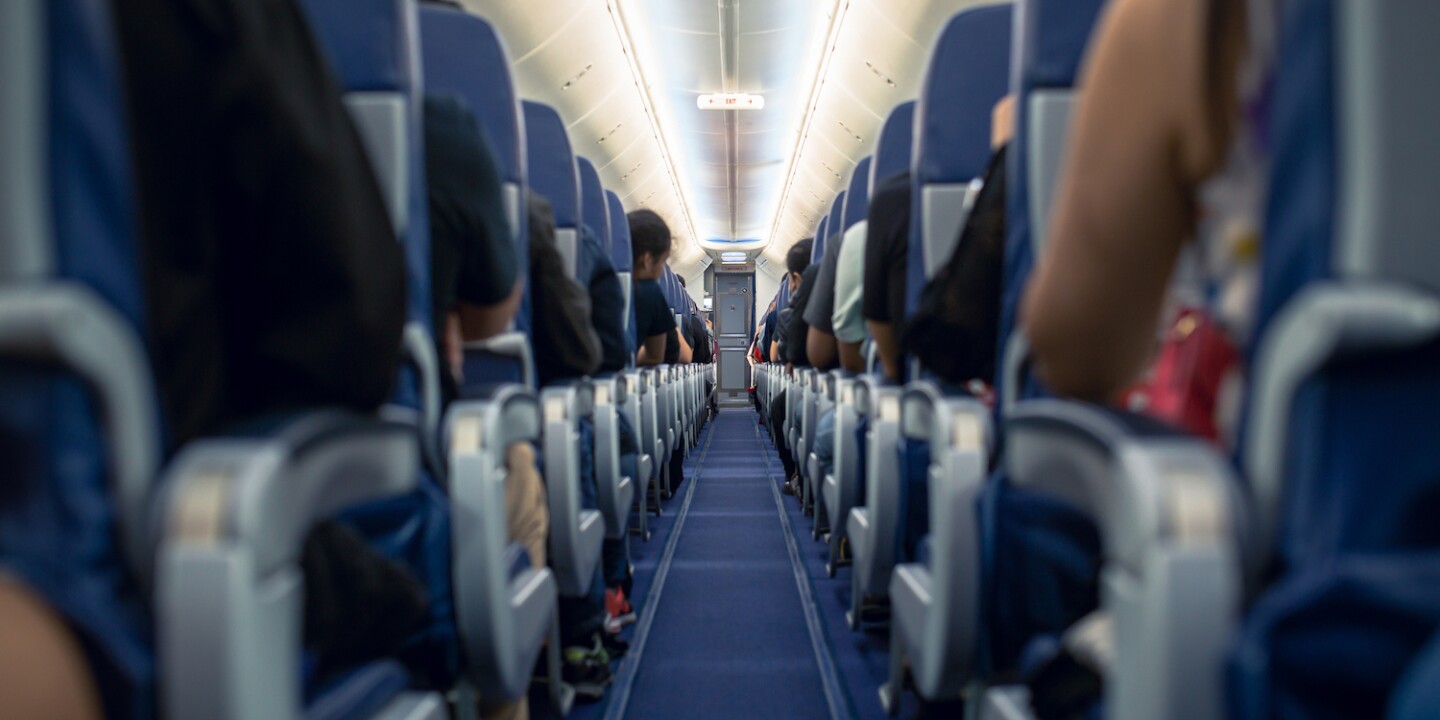Blood
Can Aspirin Help Prevent Blood Clots on Long Flights? Doctors Weigh In.
If you’ve ever flown a long-haul flight, you’ve probably heard about deep vein thrombosis (DVT)—blood clots, typically in the calves, that have been associated with flying. These clots can travel to the lungs and cause life-threatening blockages known as pulmonary embolisms.
DVT is primarily a concern on long flights, defined as four hours or more. “Four hours is the criteria, but the more significant risk is at eight hours or longer,” says Dr. Lin Chen, director of the Travel Medicine Center at Mount Auburn Hospital in Cambridge, Massachusetts, and associate professor at Harvard Medical School.
That’s all scary enough to make some travelers think about reaching for aspirin, which is known for its blood-thinning properties, before a flight. But does aspirin actually help?
What causes deep vein thrombosis on flights?
Flight-related DVT is believed to be caused primarily by lack of mobility—a concern considering how much legroom on planes has decreased over the years, especially in economy.
“Our veins—they’re not like the arteries that have the heart pumping them,” says Dr. Danielle R. Bajakian, a vascular surgeon at the New York-Presbyterian Columbia University Irving Medical Center and director of the Columbia Vein Program. “Veins have your calf muscles that are pumping the blood. So, without mobility, blood pools in your veins.”
Bajakian, who notes that the chances of developing blood clots after a long flight are considered to be roughly one in 5,000, describes a theory about another possible contributor to DVT: “There’s a theory that with differential air pressure in the airplane [the difference between air pressure inside and outside the cabin], there’s decreased oxygenation of blood and that, in theory, can also increase the risk of blood clots.” But there has been debate about this idea.
In addition, individual factors may increase the risk, including obesity, pregnancy, being over the age of 40, recent orthopedic surgery, use of birth control or hormone replacement therapy, active cancer, and a prior history of DVT.
Can taking an aspirin before a long flight prevent blood clots?
The verdict is still out. As stated on its website, the Centers for Disease Control and Prevention (CDC) does not recommend taking aspirin prior to a long flight for the purpose of preventing blood clots. Both Bajakian and Chen say that’s because there isn’t enough data to suggest that aspirin makes a difference for fliers.
“There are physicians who may potentially recommend it, and that data is not based on any notable studies,” Bajakian says. “The data comes from the orthopedic literature, where there’s a suggestion that in patients who have had hip surgery, DVT prevention is treated with aspirin. But there’s really no data to suggest that that is something that’s warranted to prevent blood clots in the veins while traveling.”
Chen says that while she does not encourage travelers to take aspirin prior to long flights, she is not completely against it, so long as the patient doesn’t have any health issues (such as an allergy to aspirin or risk of bleeding in the gastrointestinal tract, for example) that would make aspirin use dangerous. “If a traveler asks, ‘Should I take aspirin before an upcoming long-haul flight?,’ I would tell them that the guidelines don’t show evidence that it prevents deep vein thrombosis, but if they have no contraindications, no issues with tolerance, if they want to do it, I don’t tell them absolutely not do it.”
Depending on the person’s risk factors and health history, physicians may recommend a prescription anticoagulant, like injectable low weight molecular heparin or an oral alternative, prior to a long flight, but as with aspirin or any other medication, that’s a preventative measure that should only be pursued under the supervision of a doctor.
How else can fliers prevent blood clots?
The good news is that travelers can minimize their risk of DVT without medication. If you are physically able to, it’s a good idea to walk up and down the aisle; Bajakian recommends doing so once an hour, if possible. Doing calf exercises in your seat can also be beneficial, which is why Bajakian suggests storing items in the overhead bins and not under the seat in front of you so that you have as much legroom as possible. Staying hydrated, wearing compression socks, and avoiding sedatives that may keep you in your seat can also help.
While these measures are typically offered to travelers with higher risk of DVT, “I really recommend them for anybody who’s going to be on a long plane flight,” says Bajakian.

